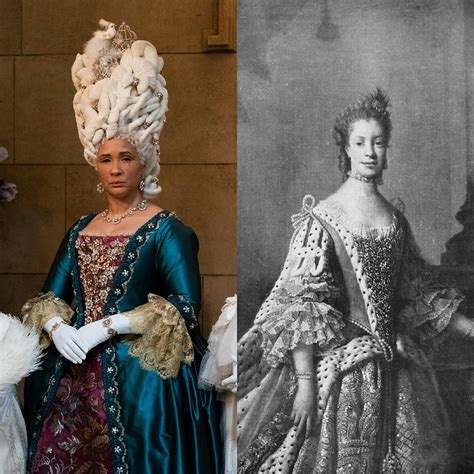Queen Charlotte Wigs: 500 Years of Royal Hair History
Queen Charlotte Sophia of Mecklenburg-Strelitz was renowned for her elaborate and opulent wigs, which became a defining characteristic of her reign. Her wigs were meticulously crafted by renowned hairdressers and were often adorned with jewels, feathers, and other embellishments. They were not merely fashion statements but also symbols of power and status, reflecting the wealth and extravagance of the British monarchy during the 18th century.

The use of wigs in royal courts dates back to the 16th century, when they were introduced as a way to cover baldness and disguise hair loss. By the 18th century, wigs had become an essential accessory for both men and women of the upper classes. They were made from human hair, often sourced from France, and were styled in elaborate and intricate designs.
Queen Charlotte’s wigs were particularly notable for their size and extravagance. She owned over 200 wigs, each costing hundreds of pounds. Her most famous wig, known as the “Caroline,” was made from over 50 feet of hair and weighed several pounds. It was adorned with pearls, diamonds, and lace, and took several hours to dress.
Royal wigs served a variety of social and political functions. They conveyed the wearer’s status, wealth, and power. They also played a role in court etiquette, as they were worn during formal occasions and state functions. Additionally, wigs were used to conceal physical imperfections and to enhance the wearer’s appearance.
The fashion for royal wigs began to decline in the late 18th century. By the 19th century, wigs were largely abandoned in favor of more natural hairstyles. However, the legacy of royal wigs continues to inspire modern fashion and hairdressing. Many contemporary designers and hairdressers draw inspiration from the elaborate wigs worn by Queen Charlotte and other royals.
Today, royal wigs are still used in certain ceremonial and historical contexts. They are worn by actors portraying historical figures, by members of royal families during official events, and by reenactors at historical festivals. Additionally, royal wigs are sometimes used as fashion accessories, adding a touch of historical glamour to modern outfits.
Choose the right wig: Consider the size, shape, and style of your head when selecting a wig. Opt for a wig that complements your facial features and overall appearance.
Secure the wig properly: Use wig caps or combs to keep the wig in place. Ensure it fits snugly but not too tightly.
Style the wig: Use hairspray or styling products to create the desired look. Avoid over-styling, as this can damage the wig.
Maintain the wig: Brush and wash the wig regularly to keep it looking fresh and clean. Use specialized wig care products to prolong the wig’s lifespan.
Wearing a wig that is too large or small: Choose a wig that fits your head properly to avoid discomfort and slippage.
Over-styling the wig: Excessive styling can damage the hair fibers and shorten the wig’s life. Use styling products sparingly and carefully.
Neglecting wig maintenance: Regular brushing, washing, and conditioning are essential to keep the wig in good condition and prevent tangling.
Wearing a wig in hot or humid conditions: Wigs can become uncomfortable and itchy in hot or humid weather. Consider wearing a lighter or more breathable wig during these conditions.
- Choose the right wig: Select a wig that matches your hair type, color, and length.
- Prepare your hair: Wash and condition your hair to remove any dirt or oil. Style your hair into a smooth ponytail or braid to create a secure base for the wig.
- Apply a wig cap: Wear a wig cap or liner to protect your natural hair and prevent the wig from slipping.
- Put on the wig: Position the wig on your head and secure it using wig pins or combs.
- Adjust the wig: Make any necessary adjustments to ensure the wig fits comfortably and securely.
- Style the wig: Use a brush or comb to style the wig and create the desired look.
- Finish the look: Secure the wig using hairspray or other styling products to keep it in place throughout the day.
| Year | Number of Wigs Owned by Queen Charlotte | Average Cost of a Royal Wig |
|---|---|---|
| 1760 | 100 | £100 |
| 1770 | 150 | £150 |
| 1780 | 200 | £200 |
| Era | Wig Styles | Key Features |
|---|---|---|
| Elizabethan | Farthingales | Large, hooped skirts |
| Stuart | Fontanges | Tall, elaborate structures |
| Georgian | Perukes | Long, flowing wigs |
| Occasion | Wig Type | Decorations |
|---|---|---|
| Coronation | State wig | Crown, jewels, lace |
| Court ball | Assembly wig | Feathers, ribbons, flowers |
| Private audience | Undress wig | More natural, less elaborate |
| Material | Origin | Price |
|---|---|---|
| Human hair | France | £100-£500 |
| Horsehair | England | £50-£100 |
| Wool | Germany | £20-£50 |
